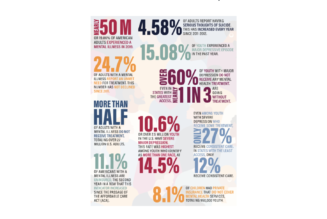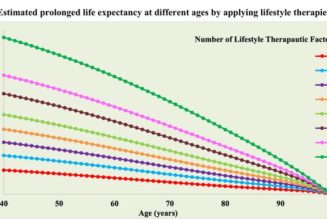
There was a recent report on the American Heart Association Life’s Essential 8 metric. It was about the association with both life expectancy and life expectancy free of chronic diseases such as cardiovascular disease (CVD), cancer, diabetes, and dementia.
The average life expectancy has increased substantially in the past few decades in most industrialized countries. However, not all of the increased life expectancy is being spent in optimal health, especially among individuals with low socioeconomic status.
This study used the UK Biobank and included more than 135,000 United Kingdom adults with an average age of 55 years. The researchers included the following eight lifestyle behavioral factors:
Not smoking.
Regular physical activity.
Healthy weight.
Healthy diet.
Healthy sleep (defined as an average of 7-9 hours nightly).
Blood pressure in a healthy range.
Blood sugar in a healthy range.
Non-HDL (bad) cholesterol in a healthy range.
The study was published in JAMA Internal Medicine.
They divided the study population into three groups with low, moderate, and high scores based on the American Heart Association Life’s Essential 8 metric, which they described as cardiovascular health scores.
They saw large differences across the Life’s Essential 8 groups.
Men with high cardiovascular health scores tended to have an additional seven years of life expectancy free of chronic disease, compared with those who had poorer scores. In women, the difference was about 9.5 years between high scores and lower scores.
Also, the number of years lived with chronic disease was decreased in those with high cardiovascular health scores. They tended to have fewer years living with those chronic diseases but more years living free of chronic diseases.
The researchers also looked into how these results might differ by socioeconomic status, educational level, and income level, as well as the Townsend deprivation index, which incorporates four variables:
Unemployment (as a percentage of those age 16 and older who are economically active).
Non-car ownership (as a percentage of all households).
Non-home ownership (as a percentage of all households).
Household overcrowding.
But they found that the gain in life expectancy free of chronic disease was very similar across all socioeconomic levels. That is, those with lower education and lower income gained as much in terms of chronic disease-free life expectancy as those who were in the higher socioeconomic levels.
Overall, the findings make a convincing case for the importance of lifestyle factors in extending health span and years free of chronic disease. It can be motivating to tell our patients that a healthy lifestyle not only extends life expectancy but also extends years of health, free of chronic disease.
So, it will be very important to population health to narrow those health disparities through education about the importance of lifestyle factors.
If you are wondering where you might get more information about the American Heart Association Life’s Essential 8, you should go to their website at https://www.heart.org/en/healthy-living/healthy-lifestyle/lifes-essential-8 where you will find many resources to help you understand and comply with the lifestyle behaviors that may improve your life in both longevity and quality.
Although dementia was part of the study above, it was the central focus of a large population-based study from China. It was published in the British Medical Journal where researchers noted that six healthy lifestyle behaviors were linked to slower memory decline in older adults.
Investigators found that a healthy diet, cognitive activity (using your brain), regular physical exercise, not smoking, and abstaining from alcohol were significantly linked to slowed decline in thinking ability. This was even true in people with genetic predisposition to dementia associated with the presence of the APOE4 gene.
After adjusting for health and socioeconomic factors, they found that each individual healthy behavior was associated with a slower-than-average decline in memory over a decade of study.
A healthy diet emerged as the strongest deterrent, followed by cognitive activity and physical exercise.
It is not surprising that there is a lot of overlap in the recommendations of these two studies. Perhaps the most amazing thing is how little most of us follow these relatively simple lifestyle guidelines.









